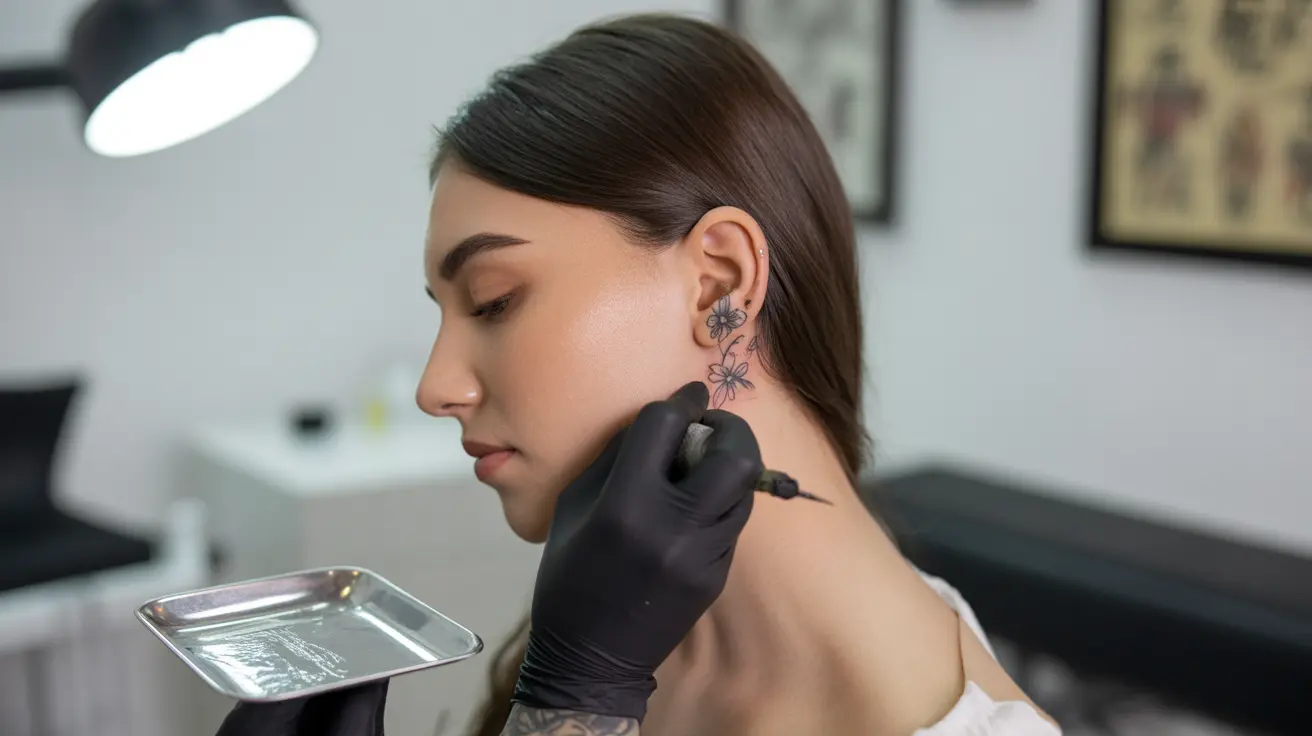Getting a tattoo behind the ear has become increasingly popular due to its subtle yet stylish appeal. However, many people wonder about the pain level associated with this sensitive location. Understanding what to expect and how to manage discomfort can help you make an informed decision about getting a behind-the-ear tattoo.
This comprehensive guide will explore the pain factors, duration, and management strategies for behind-the-ear tattoos, helping you prepare for the experience and ensure proper aftercare.
Pain Levels and Sensitivity
Behind-the-ear tattoos typically cause moderate to significant discomfort due to the area's unique characteristics. The skin here is thin and lies close to bone and cartilage, with numerous nerve endings. These anatomical features can make the sensation more intense compared to fleshier areas of the body.
The pain level varies significantly from person to person, influenced by individual pain tolerance and the specific placement of the tattoo. Areas closer to the mastoid bone or along the hairline may be particularly sensitive.
Factors Affecting Pain Intensity
Anatomical Considerations
Several physical factors contribute to the pain experience during a behind-the-ear tattoo:
- Thin skin with minimal fat padding
- Proximity to bone and cartilage
- High concentration of nerve endings
- Limited space for the tattoo artist to work
Individual Variables
Personal factors that influence pain perception include:
- Overall pain tolerance
- Previous tattoo experience
- Stress and anxiety levels
- Physical and mental state during the procedure
Managing Pain During the Procedure
While some discomfort is inevitable, several strategies can help minimize pain during your behind-the-ear tattoo session:
- Get adequate rest before the appointment
- Stay well-hydrated
- Eat a proper meal beforehand
- Practice relaxation techniques
- Choose an experienced tattoo artist
Aftercare and Recovery
The healing process typically involves some continued discomfort, but proper aftercare can help minimize pain and prevent complications:
- Keep the area clean and dry
- Apply recommended aftercare products
- Avoid touching or scratching the tattoo
- Protect the area from sun exposure
- Follow all aftercare instructions provided by your artist
Warning Signs and Complications
While some pain during healing is normal, certain symptoms may indicate a problem:
- Severe or increasing pain
- Excessive swelling or redness
- Unusual discharge or bleeding
- Fever or chills
- Foul odor from the tattoo site
Frequently Asked Questions
Do tattoos behind the ear hurt more than tattoos on other body parts? Yes, behind-the-ear tattoos often hurt more than tattoos in areas with more fatty tissue or muscle. The thin skin and proximity to bone make this location particularly sensitive.
What factors influence how much pain I will feel when getting a tattoo behind my ear? Pain levels are influenced by your individual pain tolerance, the specific placement of the tattoo, the artist's technique, your stress levels, and physical factors like skin thickness and proximity to bone.
How long does the pain last after getting a tattoo behind the ear? Initial sharp pain typically subsides within 24-48 hours after the procedure. Mild soreness and tenderness may persist for 5-7 days during the healing process.
What are some effective ways to reduce pain during and after a behind-the-ear tattoo? To manage pain, ensure you're well-rested and fed before the procedure, stay hydrated, practice breathing exercises, and follow proper aftercare instructions. Some people find taking breaks during the session helpful.
What signs should I watch for that indicate a problem or infection after a behind-the-ear tattoo? Watch for severe or increasing pain, excessive swelling, unusual discharge, fever, or signs of an allergic reaction. If you experience any of these symptoms, seek medical attention promptly.




